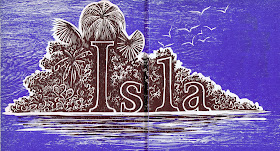We spent some time talking about connotation, and how well-chosen words do double-duty. For example, if we read about a big warrior, all we know is his (or her) size, but we know
a mighty warrior is big and strong, and probably heroic
a hulking warrior is big and menacing
a monstrous warrior is big and scary, and possibly deformed or only part-human…
Next I showed the kids the following outline or bones of what could be a snippet of a scene in a story:
Joe walks along the street toward his house. A dog runs out of his neighbor’s yard toward him, barking. He greets the dog.
Then three examples of how different stylistic choices can turn the same basic series of events into completely different scenes from completely different kinds of stories:
“Hi, Frou-Frou,” said Joe, holding the granola bar out of reach of the furball’s frantic leaps. He noticed that today Frou-Frou wore a ruffled pink shirt with the slogan “I (heart) my Daddy.”
He rolled his eyes and grinned. “Nice outfit, Frou-Frou,” he told the little dog as he stepped around her and continued on his way.
“Nice dog?” Joe tried tentatively, hardly daring to move. The beast growled again, showing yellow teeth as big as a wolf’s.
walk
strut
drag his feet
 rush
rushsprint
dash
wander
stumble
footsteps echo down the alleyway
bolt
inch
skip
jog
rampage
fly
charge
speed
creep
dog
blur of brown fur
hound
beast
pug
 animal
animalchihuahua
menace
unknown species
creature
shadow
puppy
a shape
ball of fur
pit bull
wolf
German shepherd
beagle
hellhound
vicious mass of fur, skin, and bone
golden retriever
white fluffy cloud
yippy demon
wiener dog
rottweiler
tea-cup poodle
English mastiff
Yorkshire terrier
bulldog
doberman
canine, pooch, cur, mongrel, mutt, jackal, and (just as well that none of the 6th graders went for this choice) bitch.
Joe sprinted down the sidewalk, sidestepping fire hydrants and shooting past trash bins.
Joe silently walked home from school, clutching his math test where he scored a 55%.
Joe, the monstrous troll of winter, rampaged towards his frigid cave of ice, destroying the farms on the way and eating the livestock.
Joe’s hair normally drooped over his stunning amber eyes, often getting stuck in his eyebrow piercing.
As Joanne passed by her neighbor’s house, the one with the overflowing flower pots…
Fredrick had always been scared by many things - birds, spiders, heights - but nothing scared his pants off more than Smallfoot.
Jake gives me a face full of slobber.
“Fluffy,” as Joe's neighbors had named him, should have been named “Menacing, Terrifying, Vicious, Flesh-rending Blue Chihuahua the Size of a Soccer Ball.”
Tyrone knocked Joe’s ice cream over, but it didn’t matter.
“Here, ride shotgun with me, little man. I gotta get you to the shelter around the corner.”
A pounce, and everything goes blank.
As Joanne neared her house, she noted that the door was wide open, a yawning mouth of black. She was too late.
[Pictures: Old English Sheepdog, rubber block print by AEGN, 2013;
detail from The Enormous Turnip, rubber block print by AEGN, 2008;
Excerpts taken from the work of High Rock School sixth graders.





























